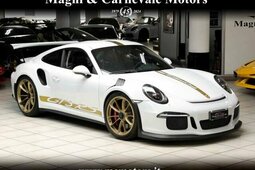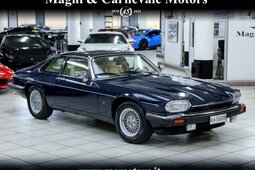In the ever-evolving landscape of the automotive industry, new models are unveiled with remarkable frequency, often rendering their predecessors obsolete. However, amidst this rapid progression, there exist a select few models that have transcended time and attained legendary status. These automotive icons have persevered for years, and in some cases, even decades, leaving an indelible mark on the history of automobiles.
Ford Model T: 19 years
The Ford Model T is historically known as the first economically accessible automobile that profoundly impacted the lives of countless Americans. The breakthrough approach of Ford Motor Company to leverage assembly lines and standardized, replaceable components dramatically decreased production costs. This innovation, which greatly lowered the price threshold, was fundamental to the Model T's immense popularity – it allowed individuals from the working class to become car owners for the first time. The original Model T boasted a 2.9-liter, 4-cylinder, 20-horsepower engine, a three-speed (including reverse) transmission, and rear-wheel drive, and it was introduced to the world on October 1, 1908. After a span of nearly 20 years of incredible success, the production of the Model T ceased with the 15 millionth car on May 26, 1927, marking the end of this groundbreaking model's era.
Fiat 126: 28 years
Presented as the successor to the well-received 500, the Fiat 126 made its debut at the Turin Auto Show in 1972. However, both models continued to be available for purchase until 1975. Equipped with a rear-mounted, 2-cylinder engine that generated 23 horsepower, the Fiat 126 was frugal when it came to fuel consumption, could accommodate four passengers, and was quite affordable. Yet, its antiquated design meant that, unlike the Fiat 500, it never managed to captivate the hearts of Italians and Western Europeans. Contrarily, in Poland, this low-cost, easy-to-maintain urban vehicle gained legendary status and continued to be manufactured until the year 2000.
Peugeot 404: 31 years
In 1960, Peugeot introduced a new model – the practical, comfortable and stylish 404 sedan designed by Pininfarina. When it went into production, the Peugeot 404 was offered as an estate or a pickup; convertible and coupé versions came out later that were specially designed for drivers who wanted to emphasise their social status. In turn, the more mass-consumption Peugeot 404 models not only stood out for their attractive appearance and versatility, but also earned the reputation of a reliable car – taxi companies were particularly fond of the indestructible 404 sedans. Not surprisingly, the sturdy Peugot 404s that were not afraid of hard work became very popular in Africa – even though production of the 404 was already discontinued in Europe in 1975, the model was manufactured in Kenya until 1991.
Peugeot 404 Berline GT 1972 | Presentation | Engine Sound
Citroën 2CV: 42 years
The main reason that Citroën introduced the 2CV in 1948 was the huge demand for cheap and simple vehicles in France. Many people were still covering long distances on post-war roads in horse-drawn carriages, so the 2CV became a true saviour of the nation by giving everyone the chance to buy a car. With a 9-horsepower air-cooled engine and front-wheel drive, the Citroën 2CV was the embodiment of functionality and simplicity – even the windscreen wipers were powered by a cable that also moved the speedometer, and the windows were lifted by hand. Nevertheless, the model nicknamed "the duck" that was economical both in terms of its price and maintenance and could drive through just about anything was met with enormous popularity, and production was only discontinued in 1990 after selling almost 9 million 2CVs.
Morgan 4/4: 63 years (still in production)
The Morgan 4/4 first went into production in 1936: the "4-4" designation of the original open two-seater meant that the model has four wheels (which was particularly important to underscore, since Morgan had previously only made three-wheelers) and the engine had four cylinders. After a short production break during WW2 and the early 1950s, the Morgan 4/4 Series II came out in 1955; although it was built on a completely different platform, it remained strikingly similar to the first models, with the exception of the headlamps that were now integrated into the front fenders. The styling of the cars from this manufacturer dedicated to long-standing traditions hasn't changed in more than 60 years (or 80, if you count from when the first model was launched) – even though every new 4/4 features improved dynamics and comfort, the exterior design remains completely untouched by time or trends.
Magic of the Morgan 4/4 | INSIDE evo
Volkswagen Type 1 (a.k.a. the Beetle): 65 years
An affordable, practical and economical people's car that could transport a German family of four at 100 km/h – this was the requirement made by Adolf Hitler to Ferdinand Porsche in 1934. The final design for the new Volkswagen Type 1, unofficially called the Beetle, was created in 1938, with an air-cooled, rear-mounted, 4-cylinder engine, rear-wheel drive and a rounded body. Mass production had been put on hold once WW2 began, and all of the Type 1 models that had already been produced were allocated to members of the party. In 1945, the Type 1 starting rolling of the assembly lines at the Volkswagen factory again, and by August 1955, a million Beetles had already been produced. In February 1972, the Ford Model T's record was broken with the 15,007,034th Beetle, and in 2003, the last Type 1 model was produced in Mexico – in 65 years of production, more than 21 million Beetles had rolled off the production lines in at least 15 different countries around the world.
---
Discover your dream car within our Car Categories, or explore our Classic Passion Shop to uncover thrilling items from our associates!




















